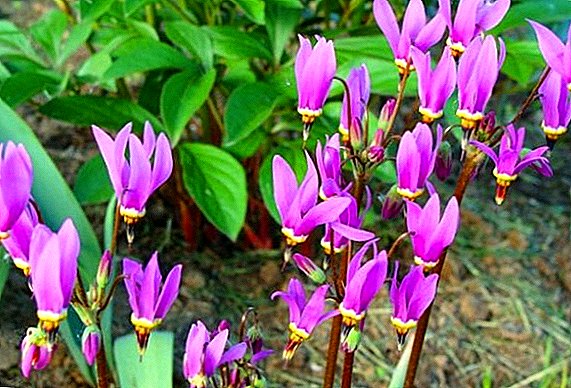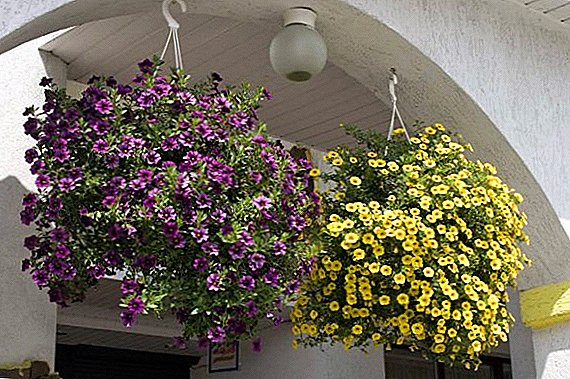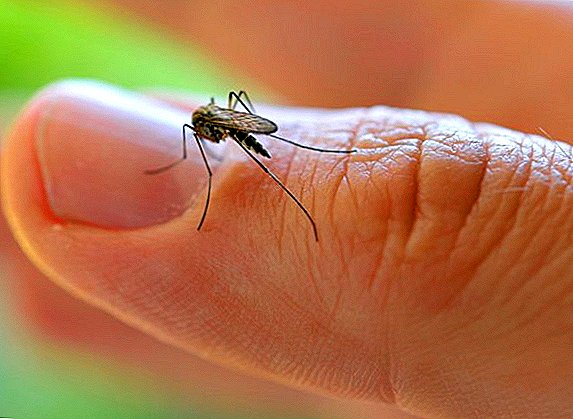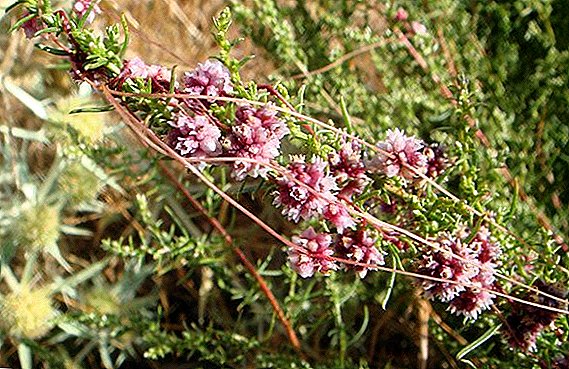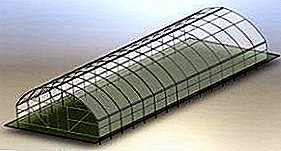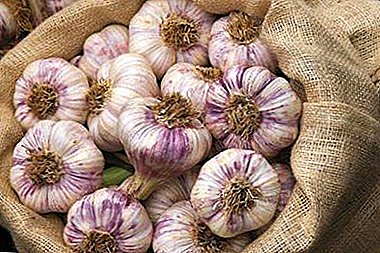
Contrary to popular belief Ficus Varietis ("Ficus Varietis") - This is not a designation of the species, but the marking from gardening farms, which is found on the labels of plants.
A literal translation of this inscription - "a type of ficus", it is universal for all representatives of this plant.
Flower growers themselves have to figure out what kind of acquired ficus belongs to.
But, be that as it may, the rules of care are the same for most of them.
general description
Ficus ’native land is the rainforests of East Asia.
Therefore, these plants love heat, plenty of diffused light and high humidity.
Externally, they look like shrubs or trees with broad leaves.
In the wild, they can reach heights about 10 meters grow at home up to 2 meters.
Therefore, you need to settle it in a spacious and well thought out place.
Home care
Care after purchase
 Ficus "Varietis" (Varietis) does not require special care at home. However, plants do not like being disturbed often.
Ficus "Varietis" (Varietis) does not require special care at home. However, plants do not like being disturbed often.
Therefore, for a newly acquired plant, you should choose a permanent place that will suit it in all respects.
Ficus does not like extremes.
It requires a lot of light, but at the same time the rays of the sun should not be direct.
He is comfortable in ventilated areas, but a constant draft can harm the plant.
Watering
Irrigation rules are individual for each individual plant.
Everything matters here: age, plant location, size and more.
Therefore, the owner of the ficus can establish the optimum rate of watering by means of trial and even some errors.
The main thing to be attentive:
- You need to ensure that the soil in the pot was not too wet, but do not wait for dry cracks on the ground.
- It is enough to wait for the topsoil to dry out; this can be checked by plunging a finger into the ground by 3 cm.
- Do not forget to pour excess water from the pan.
In the summer ficus requires more frequent watering.
In winter, you should not water the ficus more often than 1 time in 10 days.
It is recommended to water the ficuses with warm (room temperature), settled water.
Crown formation
 From the ficus can make a shrub or tree at the request of the owner. For this you need to properly form a crown.
From the ficus can make a shrub or tree at the request of the owner. For this you need to properly form a crown.
If the ficus is allocated the main core, it can serve as the trunk of the future tree.
In order for the plant to form correctly, you need to remove all side shoots, except 3-5 the topmost.
When the ficus reaches the desired height, you should pinch the top and take up the side shoots - periodically cut them so that the crown of the desired shape is formed.
If you cut the side shoots selectively, leaving some in the middle of the trunk, you can create a multi-tiered tree with a few crowns.
Ficus bush will turn out if you begin to pinch all the shoots at a height of 10-15 cm.
As soon as the new side shoots, directed outwards, grow to the same length, they will have to pinch too.
Soil and soil
Once a couple of years, you can change most of the potted land to a new one. In addition, the soil should be fertilized in spring and summer.
For these purposes, a mixture of mullein, wood ash and nettle tincture is perfect for summertime.
In winter, you can limit the store-bought fertilizer, which contain nitrogen.
Planting and transplanting
As a soil for a young plant, you can choose the soil of sand and peat with a small content of leaves.
For an adult ficus, the ground should be compacted by humus and a layer of soddy earth.
Tip: If the independent preparation of the earth mixture is difficult, you can always buy ready-made soil in the store.
When the earthen room is too thickly entwined with intertwined roots, the ficus will need to be transplanted into a more spacious container. The signal for this may be drying and lethargy plants.
It is best to replant ficuses in spring or summer. But young plants can be transplanted no more than once a year, and less often than adult plants - once every three years.
With the same purpose, when transplanting, it is possible to slightly trim the roots of the plant.
Breeding
Ficuses reproduce in different ways, but do it at the same time - in the spring.
 The most popular way - vegetative, that is, cuttings. To do this, it is necessary to cut oblique shoots from the top obliquely. In length, they must reach 10-15 cm.
The most popular way - vegetative, that is, cuttings. To do this, it is necessary to cut oblique shoots from the top obliquely. In length, they must reach 10-15 cm.
Their large leaves should be cut in half or twisted with a straw to reduce evaporation, and the bottom sheet should be completely cut off.
The milky juice that emerged from the slice needs to be washed off so that it does not interfere with the formation of the roots, then place the cutting in water for a couple of hours, and after several hours dry the cut.
Next, the roots on the handle can be germinated in two ways.
Or put it in a container with waterin which activated carbon is dissolved and to keep the stalk in a bright place for 2-4 weeks, maintaining heat above 25 degrees and high humidity.
Or immediately put in a substrate of peat, sand and vermiculite (as an option, the latter can be replaced with perlite).
Dried slice sprinkled with crushed coal and planted in the soil, covered with a package or a jar. Earth should be kept wet.
Such a "greenhouse" needs to be periodically ventilated, and when new leaves appear on the cuttings, young plants can be gradually weaned off from the greenhouse conditions to normal ones.
Reproduction is also possible with the help of a leaf with a piece of stem. The upper straight cut is made above the axillary bud, and the lower oblique - with the capture of a large part of the internode.
It is buried in the ground to the leaf stalk, and the leaf itself is rolled up and tied up. Through it, you can skip the peg - for stability. Keep it under the film or glass to be about 3-4 weeks.
Large tree ficuses can multiply air layering. For this part of the trunk (10-15 cm) within 60 cm from the top itself it is cleaned of leaves and shoots, in the middle under the knot the bark ring is cut to the cambium (approximate width - 1-1.5 cm).
The cut is treated with a means of stimulating root growth, wrapped with sphagnum with moist moss and covered with transparent polyethylene, fixing strings or scotch on both sides. Within a few months, the roots are formed, and when they are well developed, the layers can be cut and planted into the ground.
Temperature
Thermophilic ficuses do not tolerate cold.
Summer they are comfortable at temperatures down to 35 degrees of heat.
In winter reduction is acceptable up to 20 degrees - but not colder.
Important: care must be taken to ensure that the ficus does not freeze the roots - you should not put it on a cold floor or window sill.
A photo
In the photo ficus "Varietis" (Varieties):

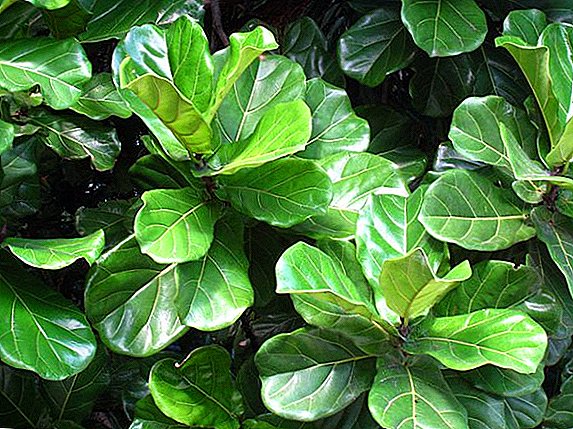

Diseases and pests
In general, ficuses are sufficiently resistant to both diseases and pests, especially if the plant has the right comfort conditions. However, sometimes trouble still happens.
 Possible diseases include fungal anthracnose and chilli. They are noticeable by ulcers or spots on the leaves.
Possible diseases include fungal anthracnose and chilli. They are noticeable by ulcers or spots on the leaves.
Sick leaves need to be removed and treat ficus fungicide. At the time of illness the plant does not need to be sprayed with water.
It is better to reduce watering and air the room every day.
Drops of edema appear due to excessive watering, leaf fall - due to sudden changes in temperature and humidity.
In these cases, you just need to adjust the scheme of care for ficus.
The main pests for ficuses are spider mites.
You can fight them with the help of chemicals that you must use strictly according to the instructions.
You can also wipe the leaves of the plant with an alcohol solution.
Another option - use onion or garlic infusion.
Important! If pests have appeared on the same plant, for the purposes of prophylaxis, other indoor flowers should be treated against insects.
Rules for the care of different types of ficus generally converge.
But if the florist accurately and correctly identified the variety of his plant, he will be able to provide him with the most suitable conditions that will help the home flora to reveal in all its glory.


